Overview
As a function of Amazon Internet Companies, Amazon gives the cloud database service Amazon DynamoDB (AWS), a fully-managed, proprietary NoSQL database with a number of advantages that helps key-value and document-based database paradigms. We are going to find out about DynamoDB Cross Area Replication with International Tables on this article.
replicate information seamlessly throughout areas with International Tables
For instance, allow us to assume you will have a large buyer base dispersed throughout the US, Europe, and Australia. Utilizing their utility, these customers can change the data on their profiles. To satisfy this circumstance, you could create three equal ConsumerProfiles DynamoDB tables within the three distinct AWS Areas the place the purchasers are located. Adjustments to the information in a single desk wouldn’t be replicated within the different two, as these three tables can be utterly unbiased. You would need to create and write code to duplicate the information adjustments if you did not have a managed replication resolution. Nonetheless, carrying this out would take loads of time and work.
Quite than writing code, you may assemble a world database that accommodates your three region-specific ConsumerProfiles tables. For updates to ConsumerProfiles information in a single area to shortly unfold to the opposite areas, DynamoDB would then mechanically replicate information adjustments amongst these tables. Your prospects should entry the similar ConsumerProfiles information within the different AWS areas if one in all them had been to instantly cease working.
Every reproduction can use a separate desk class to optimize price and efficiency if the replicas in varied areas have completely different entry patterns. As an illustration, a reproduction with uncommon entry can use the DynamoDB Customary-Rare Entry desk class, whereas replicas with frequent entry to information can use the DynamoDB Customary desk class, the place throughput is the first price.
Offering safety and entry to your International Tables with AWS KMS
- Utilizing the AWSServiceRoleForDynamoDBReplication service-linked position with the customer-managed key or the AWS-managed key that are used to encrypt the reproduction, you may execute AWS KMS actions in your world tables.
- DynamoDB will take away a reproduction from the replication group if the customer-managed key used for encrypting the reproduction will not be accessible. After 20 hours of the KMS key being detected as unreachable, the reproduction will not be erased, and replication from and to this space will halt.
- If the bottom line is now not getting used to encrypt a reproduction desk, you need to disable the customer-managed key used for that function. You want watch for the deletion operation to complete and the International Desk should first turn into “lively” earlier than the bottom line is disabled; after sending a command to delete a reproduction desk. Partial information replication from and to the reproduction desk might happen if this isn’t achieved.
- You will need to modify/replace or delete your IAM position coverage for the reproduction desk whereas it’s within the Energetic state. Should you select not to do that, the reproduction desk may very well be unsuccessfully created, up to date, or deleted.
Organising DynamoDB Replication utilizing International Tables
AWS areas are the distinct geographic areas the place AWS compute sources are housed. A logical grouping of knowledge facilities referred to as an availability zone makes up every space. You possibly can simply arrange DynamoDB replication utilizing the multi-region structure and duplicate your information utilizing the International Tables.
Understanding DynamoDB International Tables:
Deploying a multi-region, multi-master DynamoDB replication resolution is feasible with DynamoDB International Tables. Customers don’t must develop their very own code to alter the information as a result of it’s a utterly managed resolution. DynamoDB mechanically updates the information earlier than being replicated throughout a number of areas. Functions with a worldwide consumer base ought to use International Tables. Prospects are served primarily based on their proximity to a selected area, decreasing latency and enhancing utility efficiency. It additionally makes use of the multi-master paradigm to facilitate write/learn operations throughout a variety of geographic areas.
DynamoDB International Tables are at present accessible in two variations: Model 2019.11.21 (present) and Model 2017.11.29. Model 2019 is suggested for all new implementations because it gives capabilities like including new reproduction tables even when the database is already crammed with information (not empty). Model 2019 is cheaper and makes use of much less writing capability; thus, there are fewer bills.
Utilizing the AWS Console to arrange Multi-Area Replication in DynamoDB:
DynamoDB streams are utilized by International Tables to switch adjustments between replicas. A mechanism for the move of details about merchandise adjustments in a DynamoDB desk is known as DynamoDB Streams. There are a number of methods to arrange Multi-Area DynamoDB Replication, together with using Java to generate International Tables, the AWS Console, and the Amazon Command Line. The International Tables will likely be created utilizing the AWS Console on this method. You possibly can evaluate the official documentation here, when you want to create the International Tables utilizing Java or the Amazon Command Line.
To arrange Multi-Area DynamoDB Replication and construct International Tables utilizing the AWS Console, you have to create International Tables utilizing the AWS Console and add areas to arrange DynamoDB Replication.
Steps:
- Log in to the AWS Account utilizing your credentials and open the DynamoDB Console.
- Choose the Create desk possibility on the suitable facet nook of the console.
- Present a Tablename and a Partition key. Notice that the partition key is part of the desk’s major key.
- You possibly can customise the desk settings or select to set the default settings of the desk.
- You possibly can click on the Create desk button, and your desk will get created.
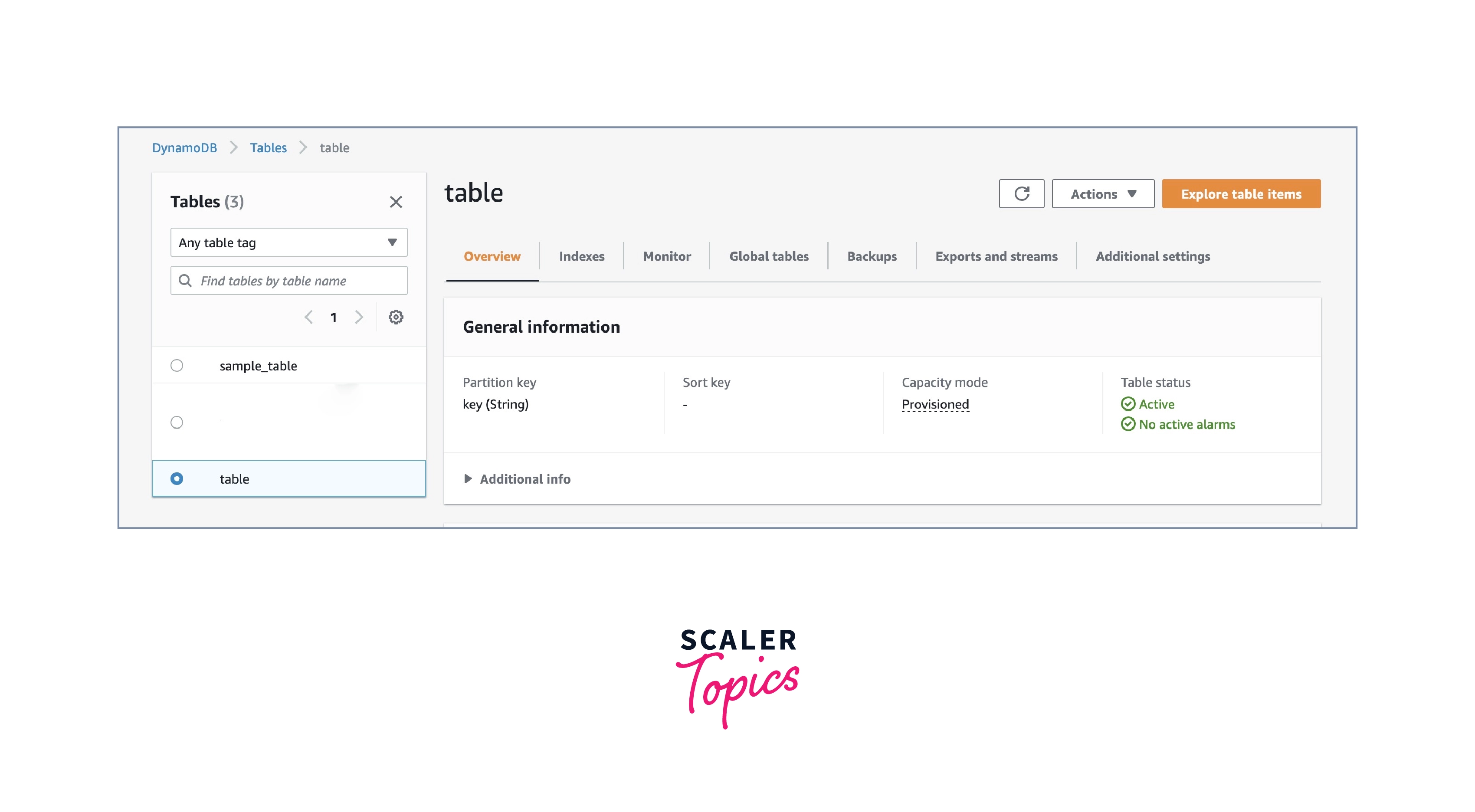
- Once you navigate to the ‘Export and streams’ possibility, you’ll observe that the DynamoDB stream is disabled.
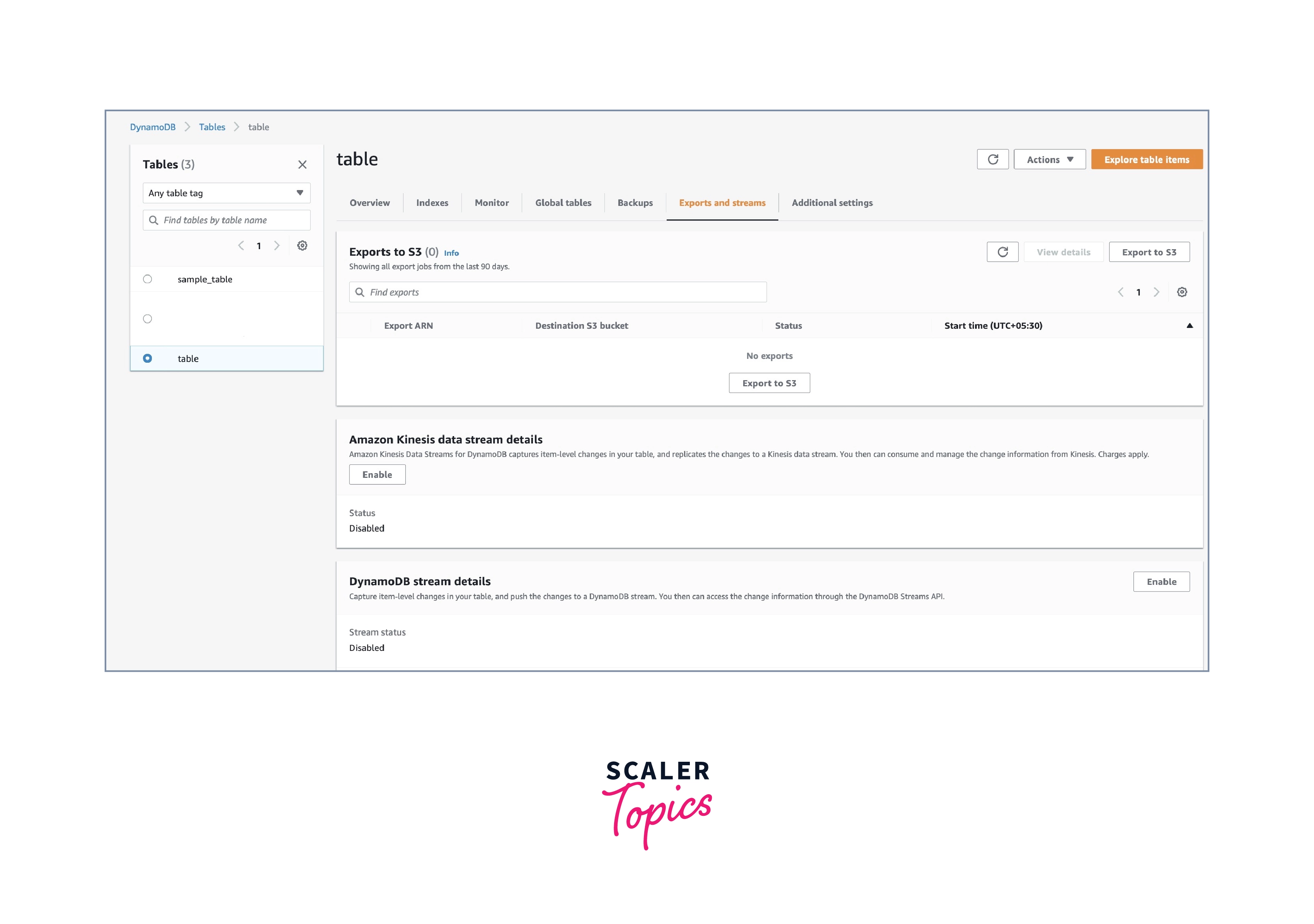
- Transfer to the ‘International tables’ possibility and select ‘Create reproduction.’
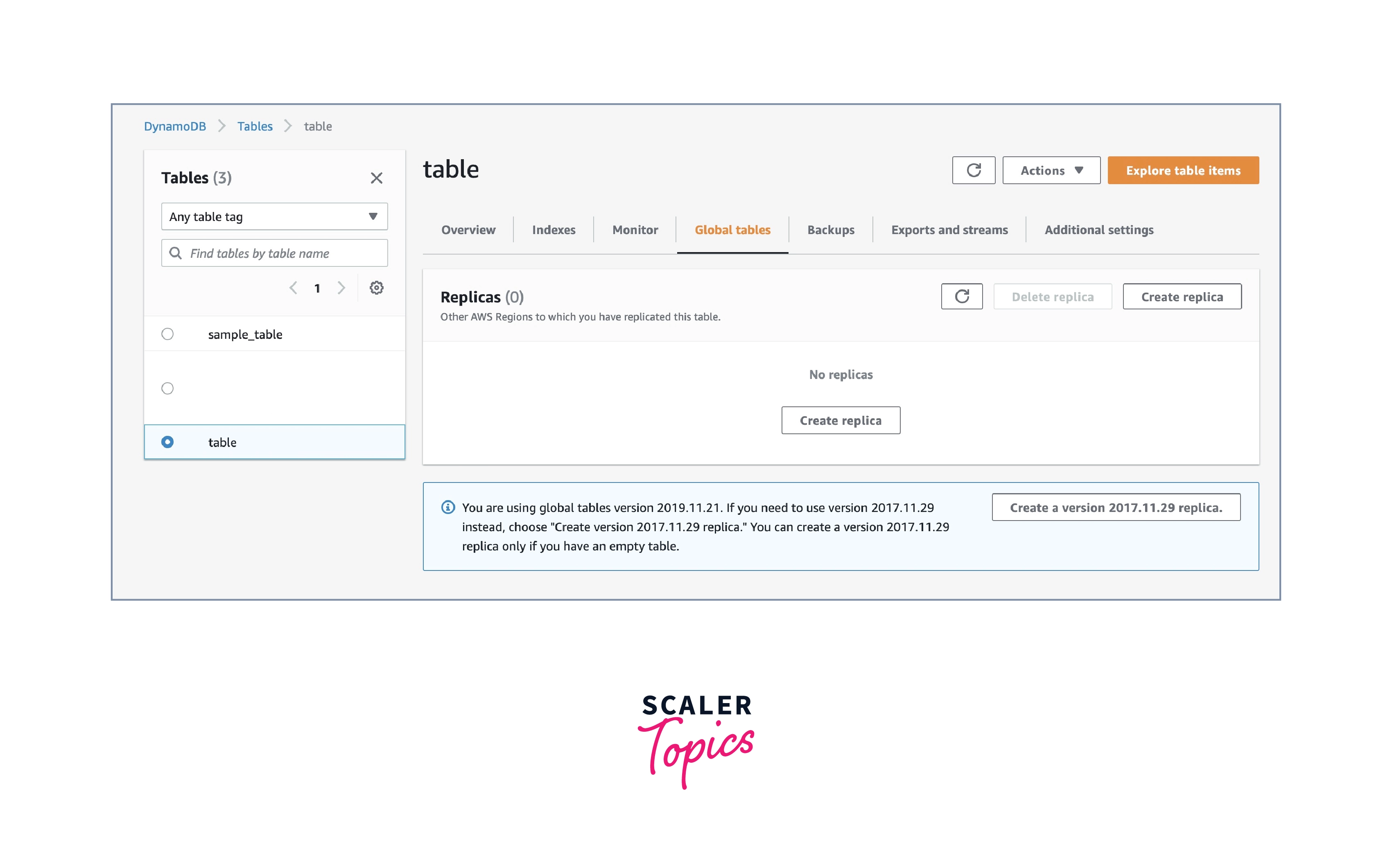
- Choose the Out there replication Areas from the dropdown menu and select ‘Create reproduction.’

- After the reproduction is efficiently created, you’ll now observe that the DynamoDB stream is enabled.
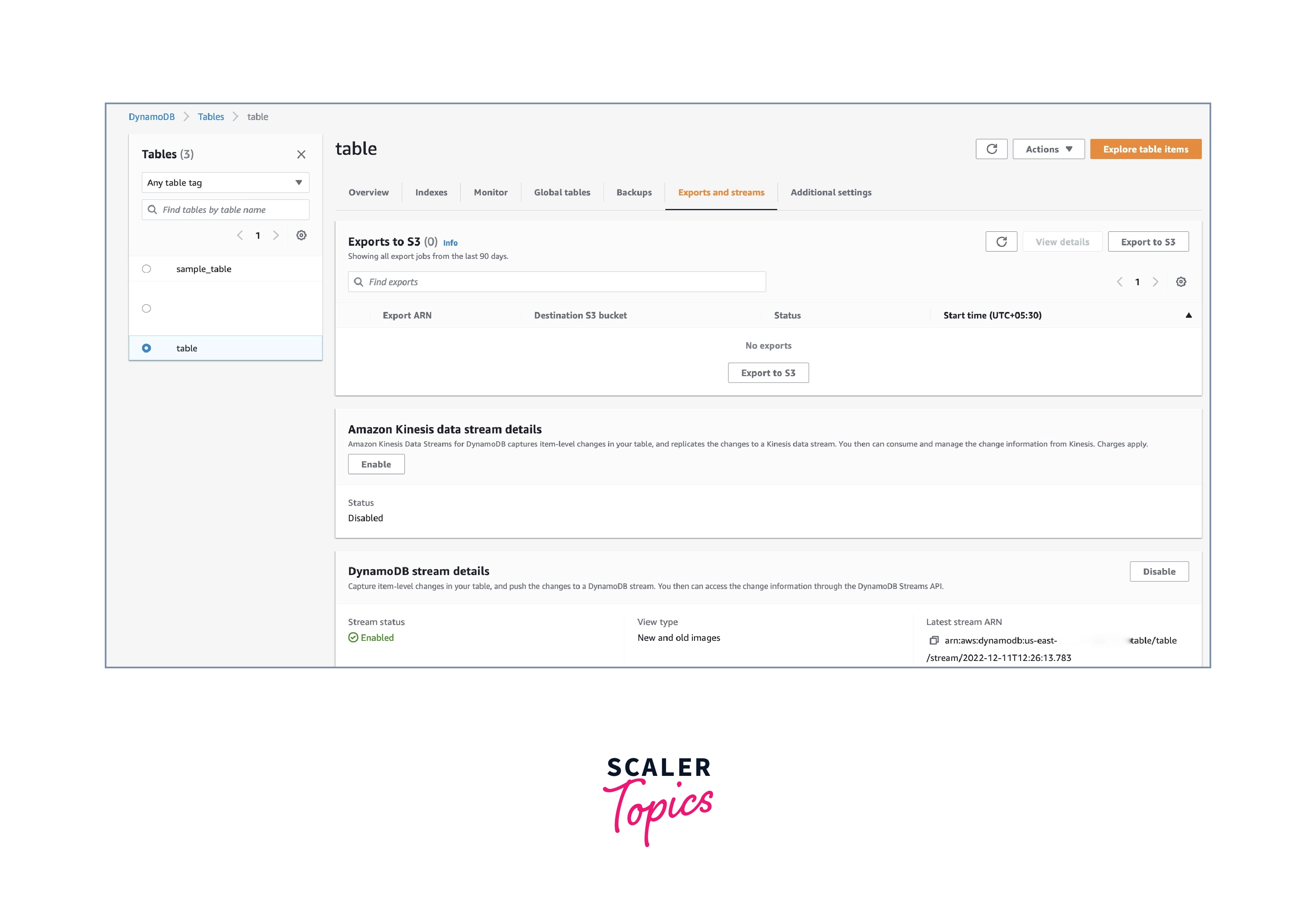
- The reproduction will likely be efficiently created within the chosen area.
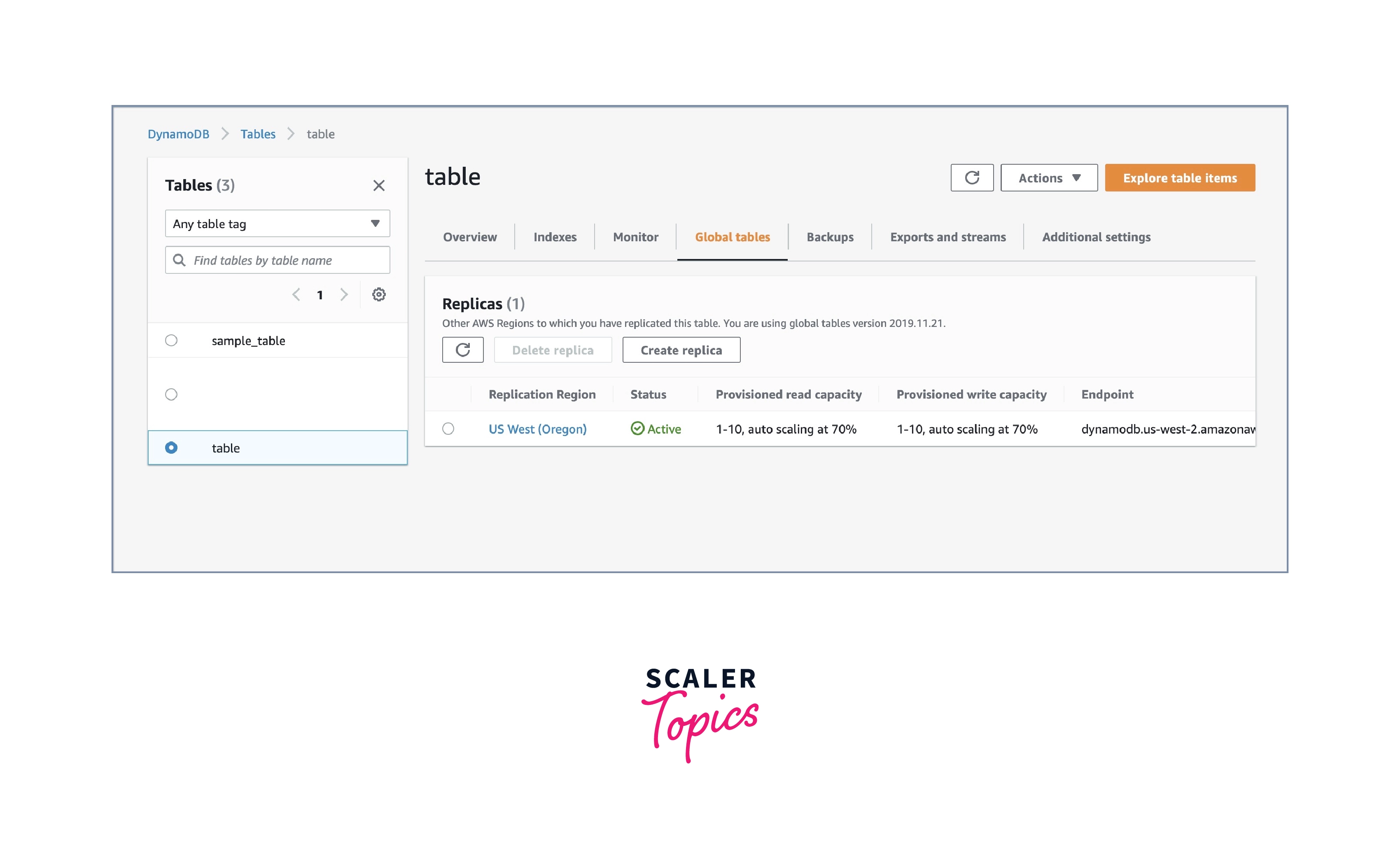
- By finishing up the identical process once more, you may add new areas.
Conclusion
- To summarize, we’ve got seen tips on how to arrange Multi-Area Replication in DynamoDB with International Tables. It gives a succinct introduction to a wide range of associated concepts, helping customers in higher understanding them and making use of them to perform information replication and restoration in the best method. Whilst you might arrange DynamoDB replication utilizing the International Tables methodology, as detailed on this article, it’s extremely labor-intensive and necessitates in-depth technical information.


